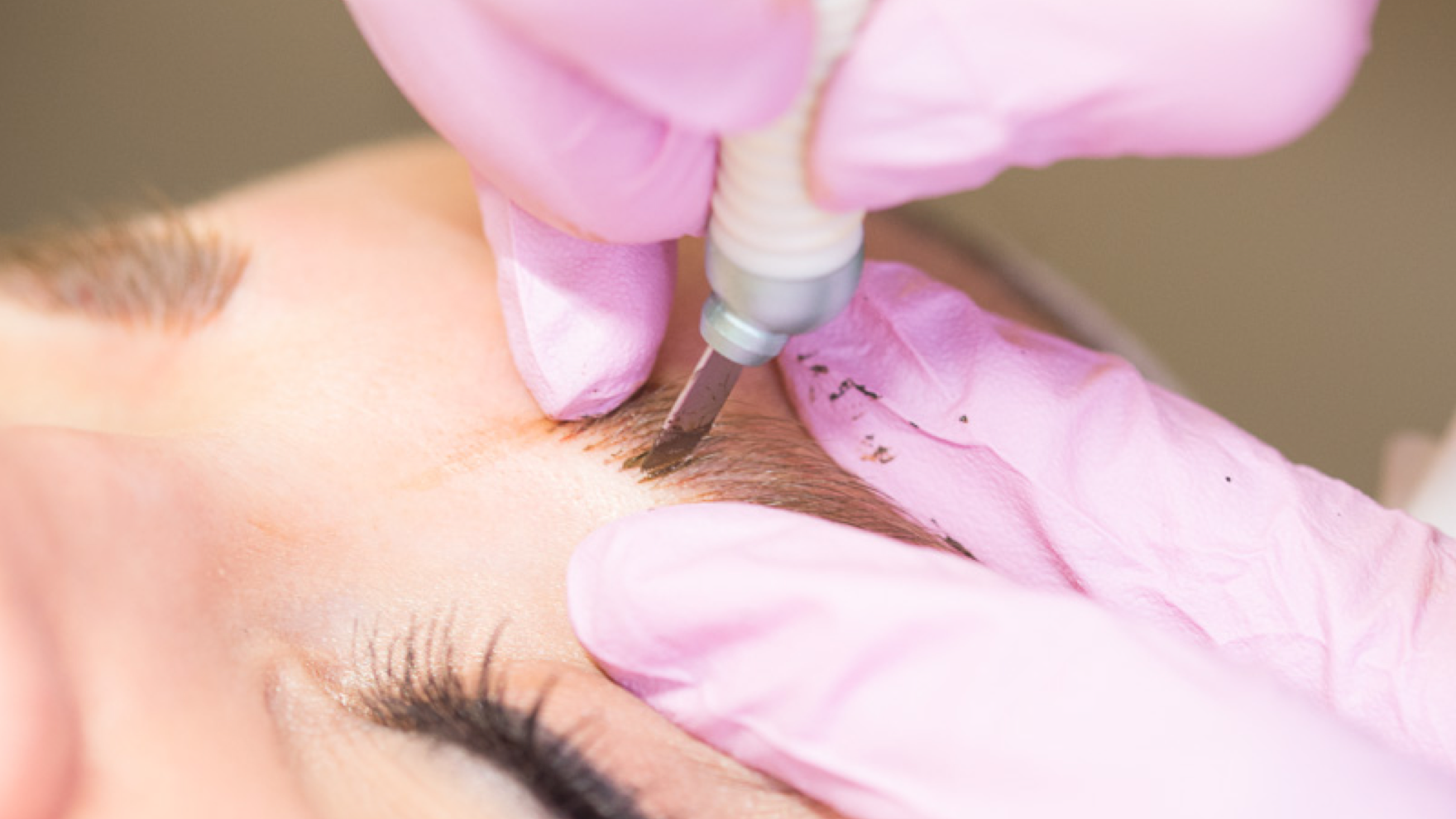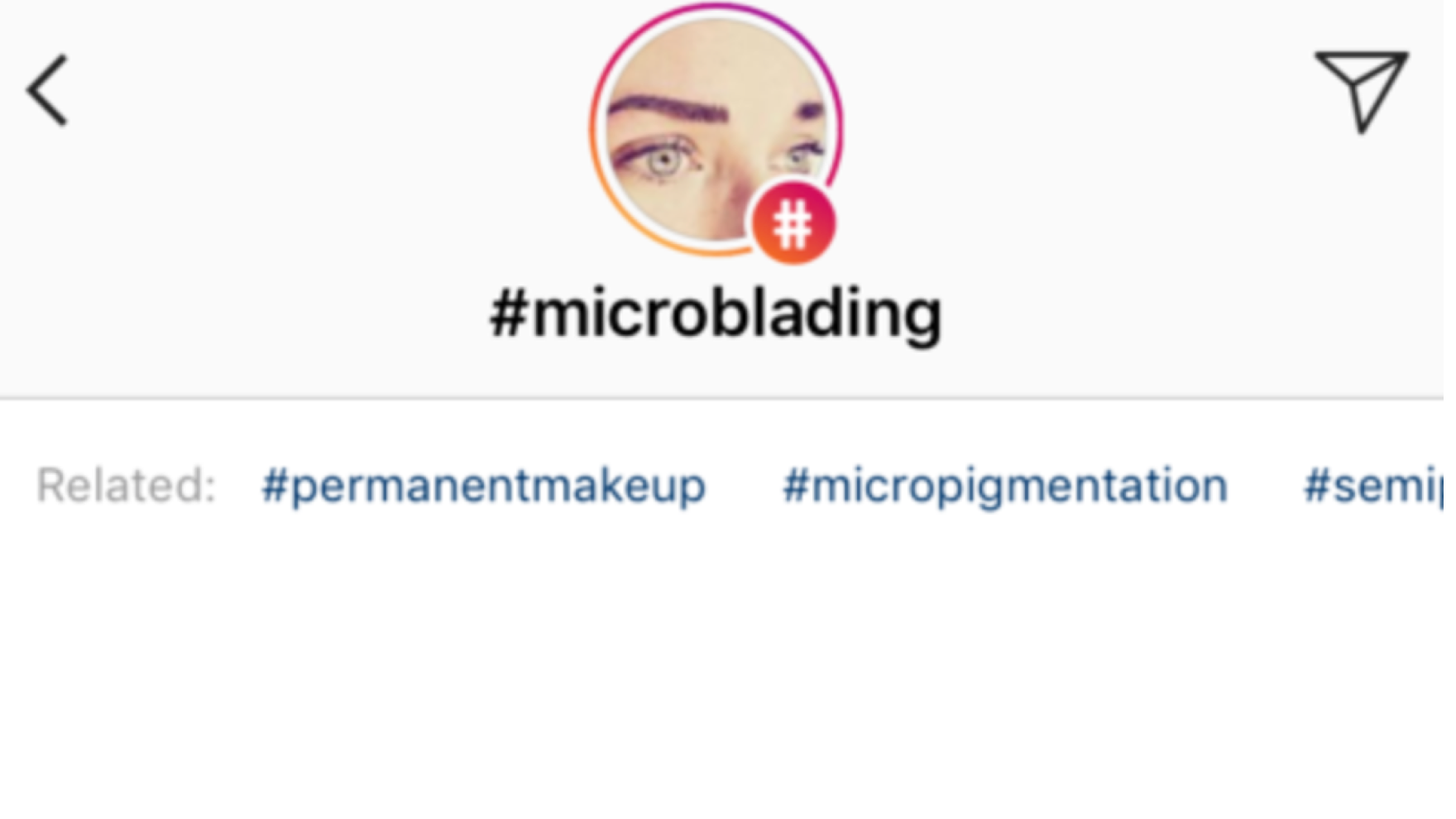Microblading gone wrong is all over the media right now.
In recent weeks, we’ve seen this trend getting worse, and with the increasing mainstream popularity of microblading, we’ve noticed horror stories are also becoming more and more frequent and even viral.
This past week was a particularly bad week for microblading. We've all heard the story by now...
A single mother goes to a local spa to have a microblading procedure in the hopes of attaining bolder, more full, hassle-free brows, only to wake up the next day with a horrifying outcome. Her skin actually became so irritated that it peeled right off her face, causing her both physical and emotional trauma that she is still dealing with. Her skin literally fell off of her face.


This issue is so prominent lately, that the term “botched microblading” is the second suggested search on google when you type “botched m”
It’s going to get worse before it gets better.
Today, if you are looking for a microblading procedure, the chances of getting a bad experience and being exposed to health risks are so much higher than finding an experienced professional and getting high-quality treatment. The combination of artists accepting clients that are not good candidates as well as the extremely high volume of new artists entering the field after getting only 2-3 day training with limited education and even LESS experience is contributing to a dramatic upswing in microblading horror stories.
Now more than ever, clients should be hyper vigilant when selecting a microblading artist.
If you are in search of a microblading procedure and you want to limit your chance of exposure to health risks and increase the chances of a great final result we’ve got you.
This list we've created is a guide for how to find a high quality artist. This isn't a list of suggested best practices or nice-to-haves… this is the absolute bare minimum standards that every artist should be adhering to. If an artist you're consulting with is missing anything from the list (and you just so happen to like your skin attached to your face) - DO NOT BOOK an appointment
1. Book a consultation and site inspection
Instead of relying on Instagram, social media or website reviews, take the time to pick up the phone and call the artist and book an in-person consultation. This is particularly important if the artist is not a direct referral from someone that you know. The consultation will give the artist a chance to understand your needs, assess your skin condition and provide answers to your specific questions. Plus, you’ll be able to do a site inspection at the same time to view the working conditions. Make sure to look for an environment that is tidy, well-lit, pet-free, and sanitary. Most states and provinces also require a sink or access to water to be in each procedure room. An unsanitary working environment is a massive red flag when someone is making incisions into your face, and should not be compromised on.
- Tools and equipment inspection
It is 100% essential that all needles the artist uses are sterilized. This is usually a basic requirement of the every local governing body. The packaging should also indicate sterilization markings. So if there are no sterilization markings at all that's a huge red flag and deal breaker.
Make sure the artist mentions sterilization during the consultation or educates clients on their process for ensuring sterilized blades, needles and handles. You should also see a sharps container and watch that used tools be deposited into the sharps container. The
SPCP advises that one-time use disposable tools are the safest for both the artist and client and reduces the risk of cross-contamination in the work area. Make sure to watch if the artist uses a new tool and that she/he opens a new package for each and every client. Unfortunately, a lot of artists re-use their handles and in some cases even re-use needles.
- Copy of training certificates
Before you book an appointment or sit in an artist’s chair, make sure they display their training certifications and any other permanent makeup/microblading courses they've taken (either in on-site or on their website). If you're unsure and don’t see this information displayed anywhere, ask the artist to see their credentials. Because microblading has become popular in such a short amount of time, it's still new and there is a lack of regulation for training. There are so many new artists out there who have not been properly trained, which highly increases the chances of client complications with the procedure. In addition to looking at the training certificate, it is also a good idea to see who provided the training and gauge the reputation and experience level of the trainer (as many trainers have 6 months of experience or less).
- Bloodborne pathogen completion course
You may need to do some digging and additional research, but when an artist is going to perform any type of procedure like this, it’s important to do your homework and ensure that your artist is well-educated on the potential risks. If the artist has completed this necessary course, then they shouldn't have a problem showing it to you. Read our blog post about Blood-born pathogens
here.
- Seeing Previous HEALED Work
At the end of the day, even artists who are properly certified and abide by proper sterilization standards, they still may be new to microblading. Make sure you always do your research on the artist’s past work and read as many reviews on the experience, healed results, and interaction with the artist that you can.
Remember this rule of thumb: pictures taken “immediately after” show art, “healed” pictures show skill.
You may think this one is obvious. You definitely want your artist to be wearing gloves for the entire procedure. But it’s also critical that those gloves touching the open wounds on your face haven't been contaminated by touching reusable objects in the procedure room (this includes lights, mirrors, phones, or coming into contact with other clients). Artists that are educated in the transmission of blood-borne pathogens understand and are acutely aware of avoiding non-disposable items with contaminated gloves. The tiny cuts that are made on your eyebrows during a microblading procedure are extremely susceptible to infection. Also of equal importance is the washing of hands before and after the procedure. If an artist is seen not taking proper precautions, think twice before booking an appointment with them.
Is the artist living in a disposable universe? Do they dispose of all microblades, gloves, handles, needles, and everything else that may be contaminated directly after they no longer need them? Professional and well-educated artists will dispose of all needles INCLUDING the handles used during the procedure to reduce the risk of transmitting diseases or infection. Beware of artists that re-use handles in order to save a few bucks. This is a widespread issue that many people aren't even aware of. Companies that sell handles and needles typically sell 25 needles for every handle.
- Aftercare and Follow-up Appointment
During the consultation, it is good to take note of what the artist’s normal protocol is for aftercare and follow-ups. Does the artist give you an ointment and send you out the door? Or do they take the time to sit down and explain the aftercare and healing process and why it’s important.
- Do You Qualify for the Procedure
We recently wrote an article called “Am I A Good Candidate for Microblading”. We wrote this article because, well... not everyone is a good candidate for a microblading procedure. Reasons for this can vary depending on your skin type or medical conditions you may have (including medications or supplements you may be taking). Either way this is something both clients and artists have a responsibility to research prior to any procedure so that they both understand conditions whereby results may not be 100% optimal. For more information on qualifying yourself or clients for microblading, check out our blog post here.
-
Business License, Annual Health Inspection Report, Insurance.
Make sure the place you are going for your procedure is a legitimate business. Would you go to a surgeon who doesn’t have a license to practice? What about insurance? Has the artist/business passed its annual health inspection? Did they even complete their annual health inspection? Moral of the story...don’t allow someone to perform a procedure that involves cutting into your skin unless you are absolutely sure that they’re a professional by the books as well.
11. Proper aftercare is JUST as important as the procedure itself
The healing period provides the opportunity and breeding ground for infection. After you leave your artist's salon, your results are no longer in their hands. But there are precautions and steps you can take to ensure that you don't end up with any unexpected issues. Educate yourself on different healing methods and assess what your artist recommends. See the difference between Wet V.S. Dry Healing here. Ask your artist if they use an anti-bacterial product that will provide protection between your healing brows and dangerous viruses and infections like this one HERE. This will ensure that you are protecting the vulnerable area from any harm, and reduce your risks.
As a client looking to have a microblading procedure done, it is your responsibility to do your homework on the artists in your area. If you have determined that the artist and their space meets the basic standards listed above, there is no reason that a microblading procedure can’t be an amazing experience that adds convenience and self-confidence to your life. If you do your due-diligence and ensure that artists are well-trained and are following best-practices, the chances of your procedure going smoothly and successfully will increase, leaving you with amazing results that you love!
Caveat Emptor!









Leave a comment
This site is protected by hCaptcha and the hCaptcha Privacy Policy and Terms of Service apply.